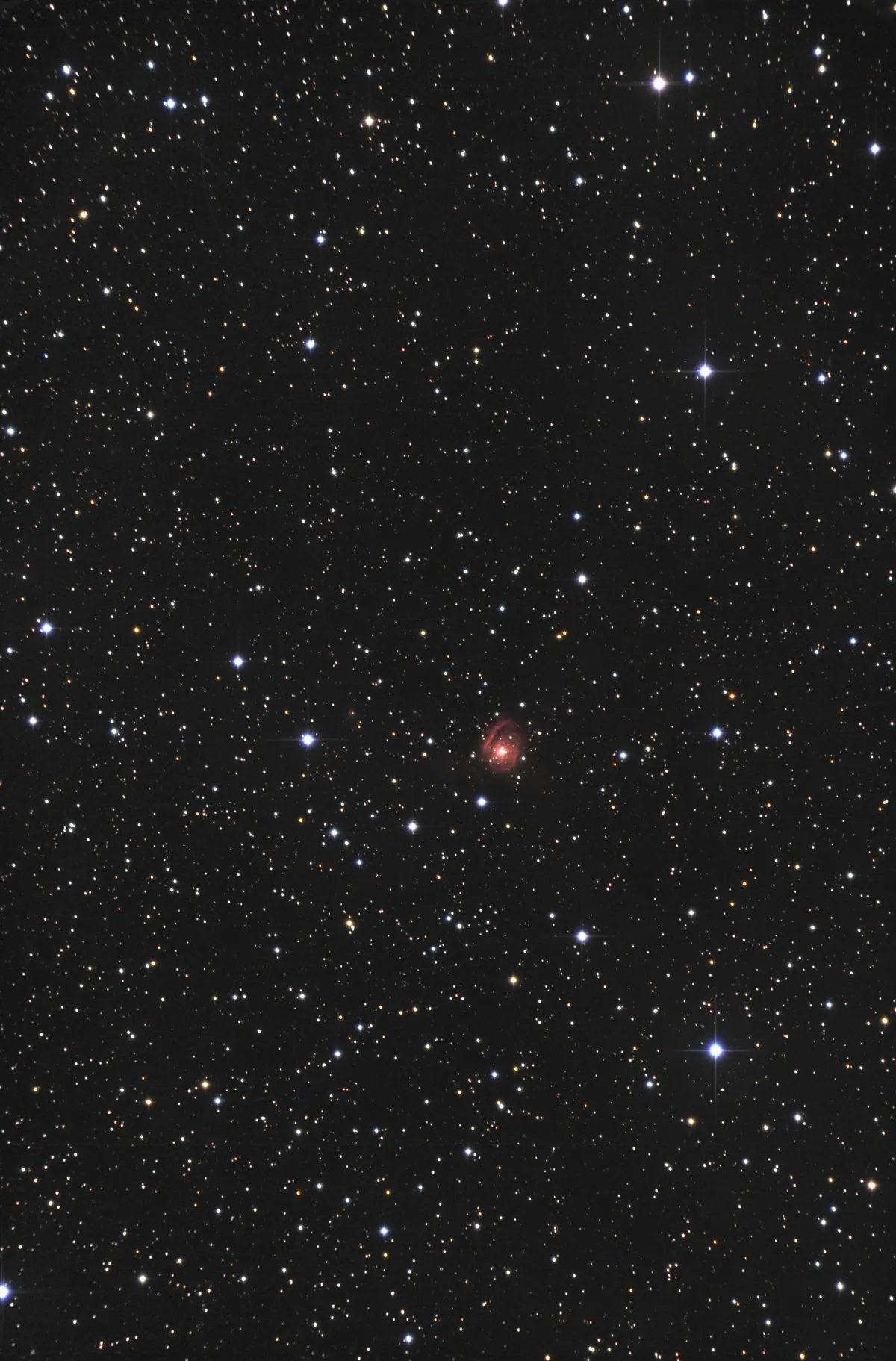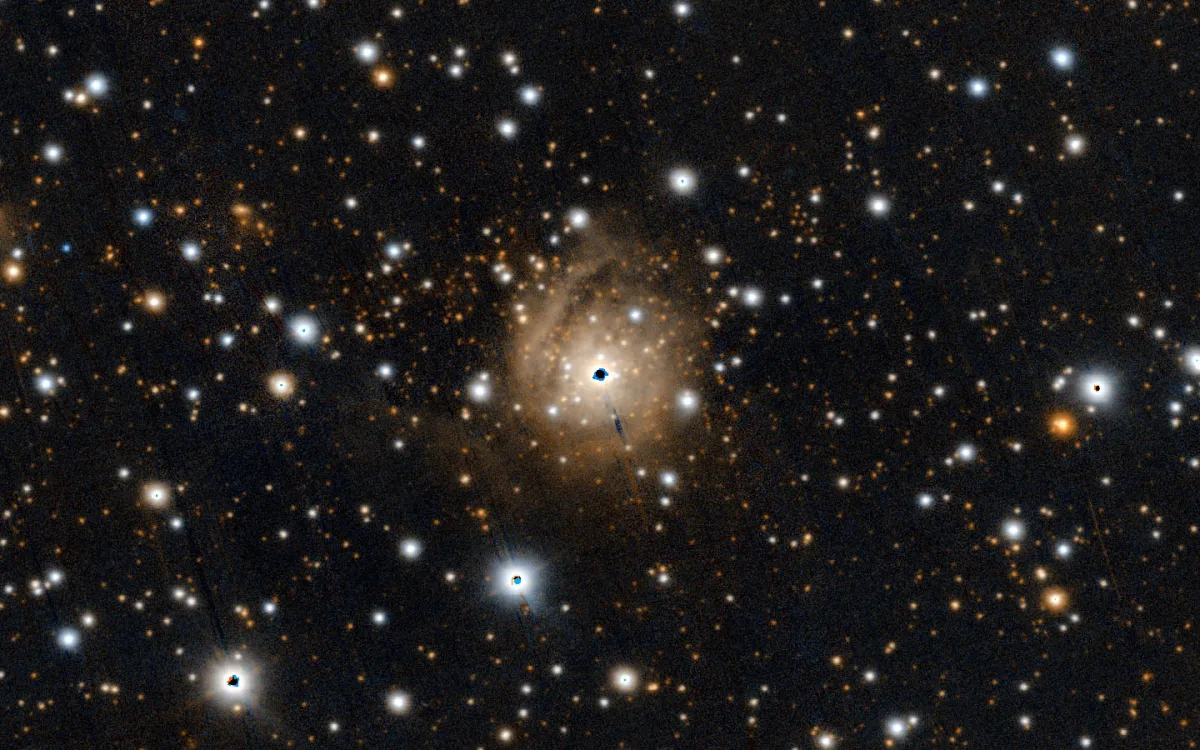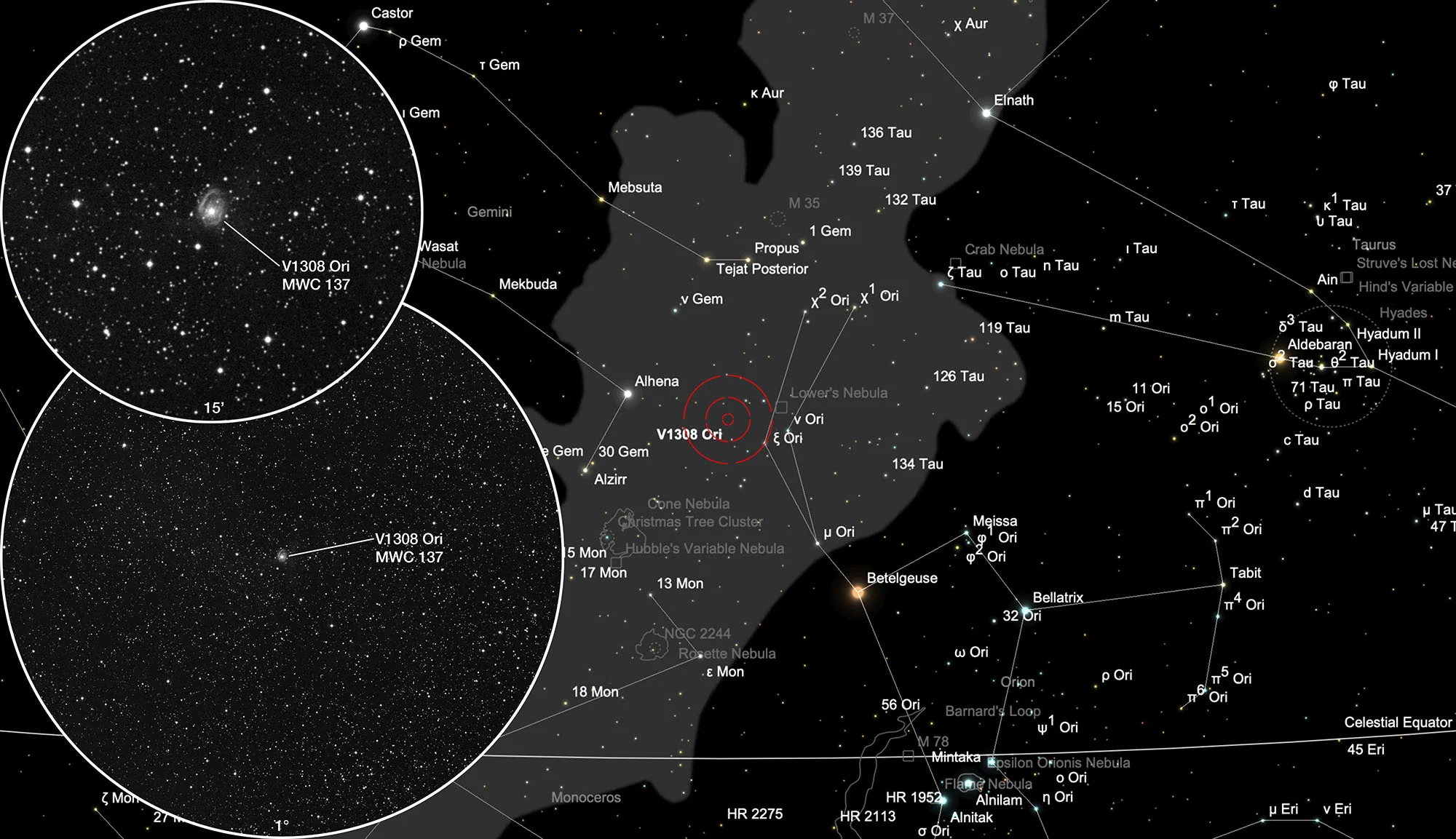Galactic Nebula MWC 137

History
The designation MWC 137 refers to the «Mount Wilson Catalog» [388] published in 1933, a catalog of class O, B and A stars with bright hydrogen lines. Stewart Sharpless recorded the nebula around the star V1308 Orionis under the designation Sh2-266 in his catalog of H-II regions published in 1959 and described it as elliptical, amorphous to fibrous and very bright. [310] The nebula was originally thought to be a planetary nebula in 1967 by the two Czech astronomers Luboš Perek and Luboš Kohoutek, which is why it was named PK 195-0.1. In the version from 2000 it is finally listed as an incorrectly classified PN. [146]
Physical Properties

MWC 137 belongs to the group of galactic B[e] stars, is surrounded by the nebula Sh2-266 and is located in the centre of a star cluster at a distance of 5.2 ± 1.4 kpc. The age of this star cluster is estimated to be more than three million years. The evolutionary status of MWC 137 has been debated for a long time. Suggestions ranged from pre-main series to post-main series. With the discovery of a hot, circumstellar disc of CO emissions, a preliminary stage of the main series could be ruled out. With a mass of 10-15 solar masses, the star has moved far away from the main sequence. In 2016, a multi-node jet was discovered moving away from MWC 137 at high speed. Estimates of the age of these nodes indicated that they are much more recent than the large area nebula. The position angle of the jet is with the polarization angle and at right angles to the rotating, circumstellar disk. The large-area Hα structure could be a ring nebula that was created by the interaction of stellar winds with the interstellar medium, or it could also be a B[e] supergiant that changes to a blue supergiant with a bipolar ring. Research showed, however, that MWC 137 alone could not create the geometric structure of the nebula. [389]
| Name | MWC 137 |
| Object Type | Herbig Ae/Be Star |
| Right Ascension (J2000.0) | 06h 18m 46s |
| Declination (J2000.0) | +15° 16' 52" |
| Parallaxes | 0.194 mas |
| Radial velocity | 652.916016 km/s |
| Redshift z | 0.00218 |
| Spectral type | sgB[e]d |
| Angular size | 1.117' × 1.117' |
| Magnitudes | U 12.89; B 13.3; V 13.759; G 11.177768; R 11.67; I 10.31; J 8.762; H 7.84; K 6.623; g 12.8; r 11.09; i 10.6 |
| Identifiers | 2MASS J06184553+1516522; ALS 33; AP J06184553+1516522; CSI+15-06159; DO 12103; EM* MWC 137; FMC 15; GAL 195.65-00.10; GRS G195.64 -00.10; GSC 01315-01508; Gaia DR2 3344973478481675264; Gaia DR3 3344973478481675264; HBC 199; HBHA 1715-03; HIC 29988; HIP 29988; IRAS 06158+1517; JP11 5211; LF 8 +15 198; LS 33; Lan 36; NSV 2906; PK 195-00 1; PN ARO 79; PN VV' 42; RAFGL 5191; SH 2-266; TIC 437994564; TYC 1315-1508-1; UCAC4 527-024460; V* V1308 Ori; WB89 794; [KW97] 28-21; [MDG2016] 1 |
Finder Chart
MWC 137 is located in the constellation Orion. The best time to observe is August to May, when the circumpolar constellation is highest.
